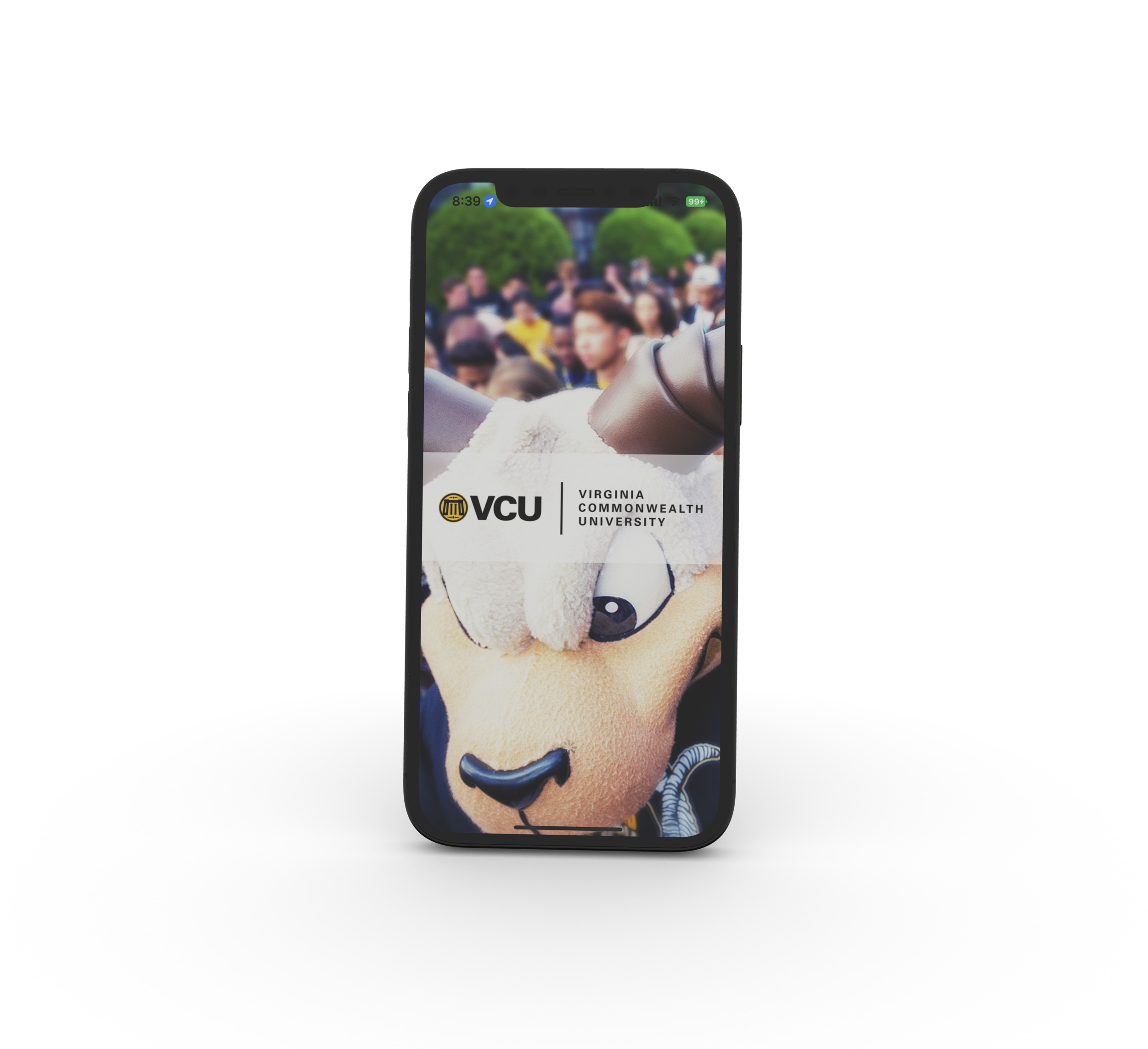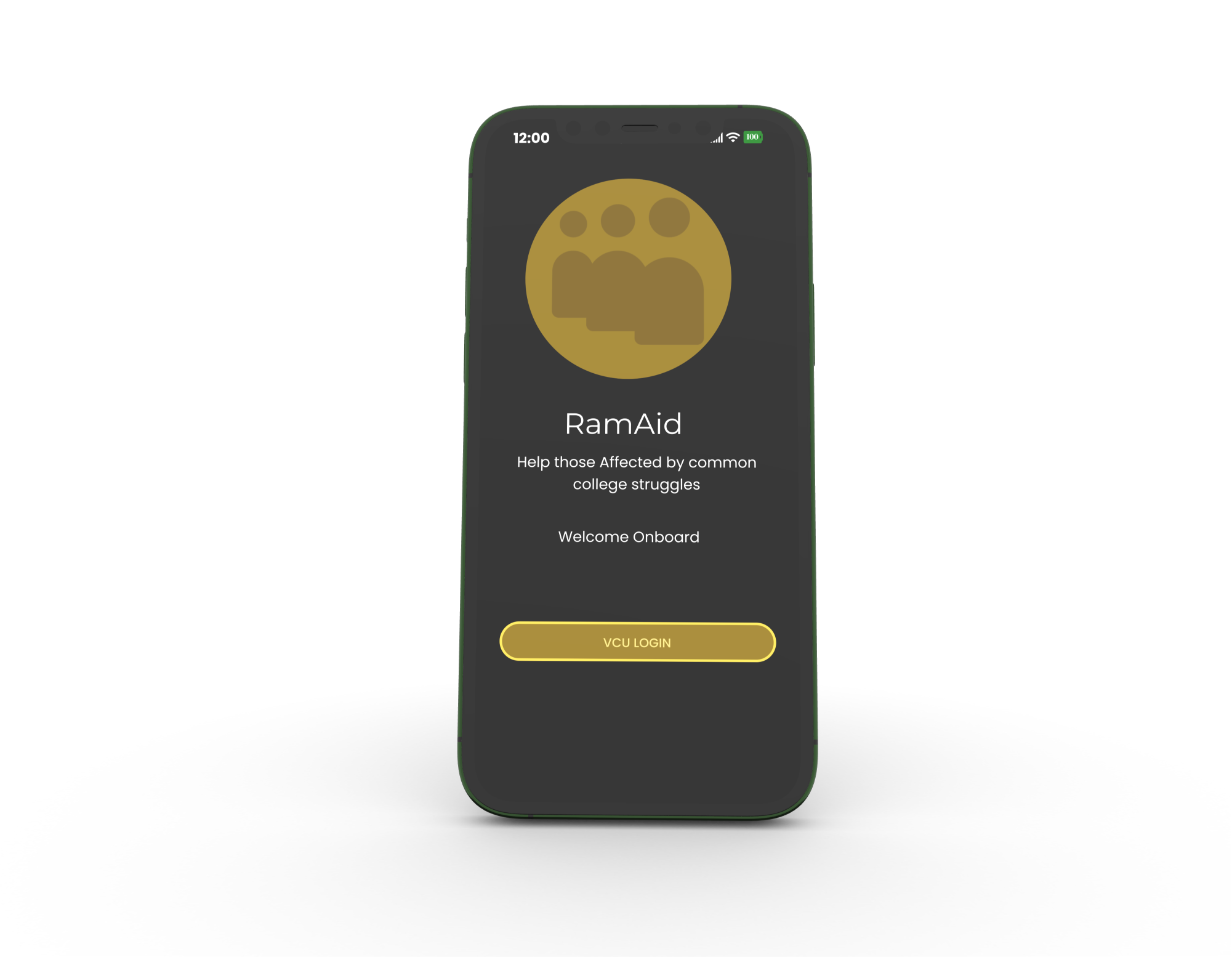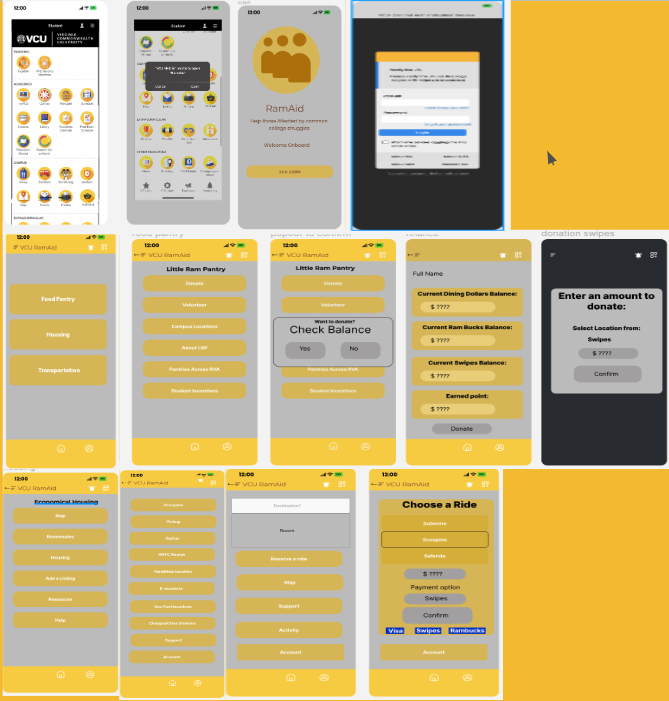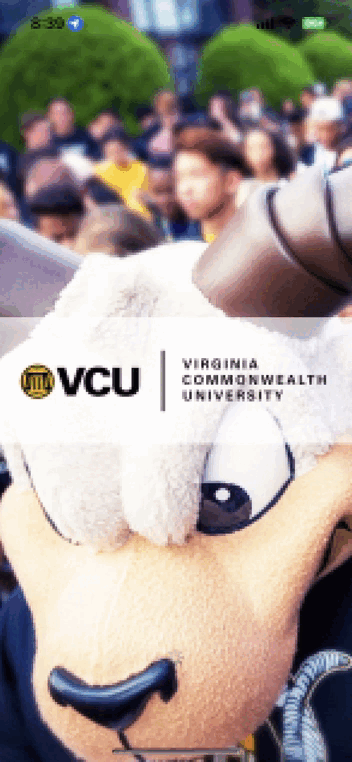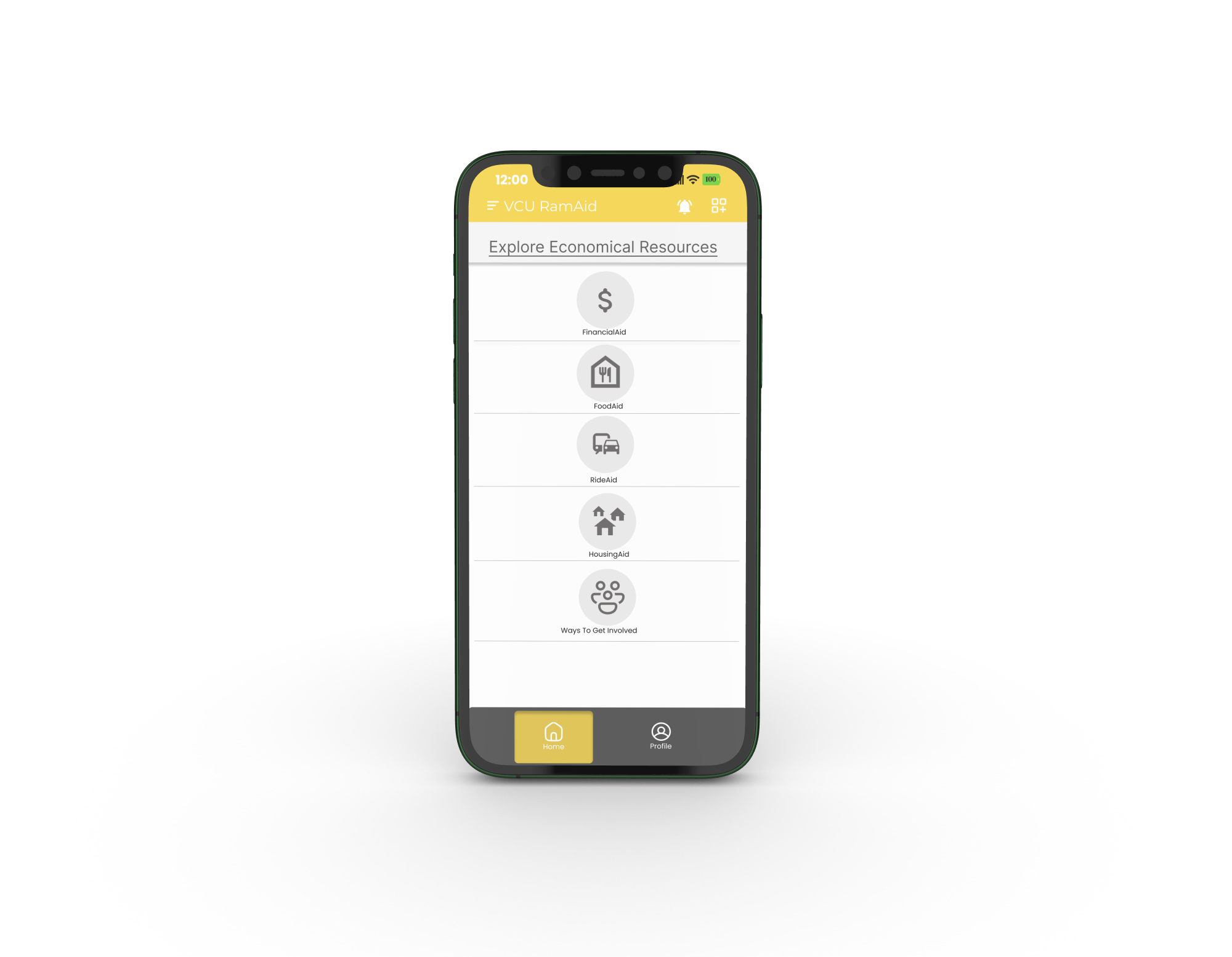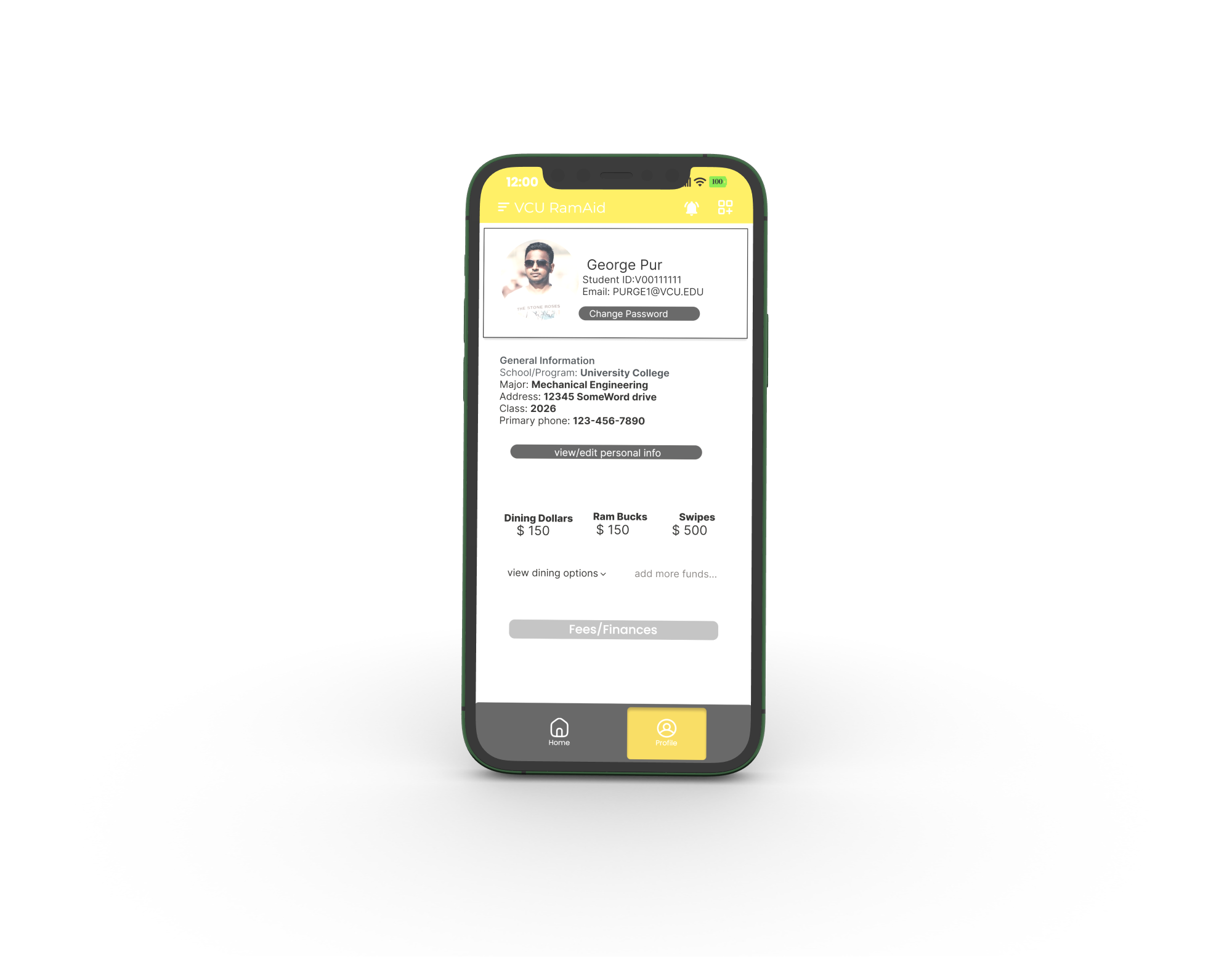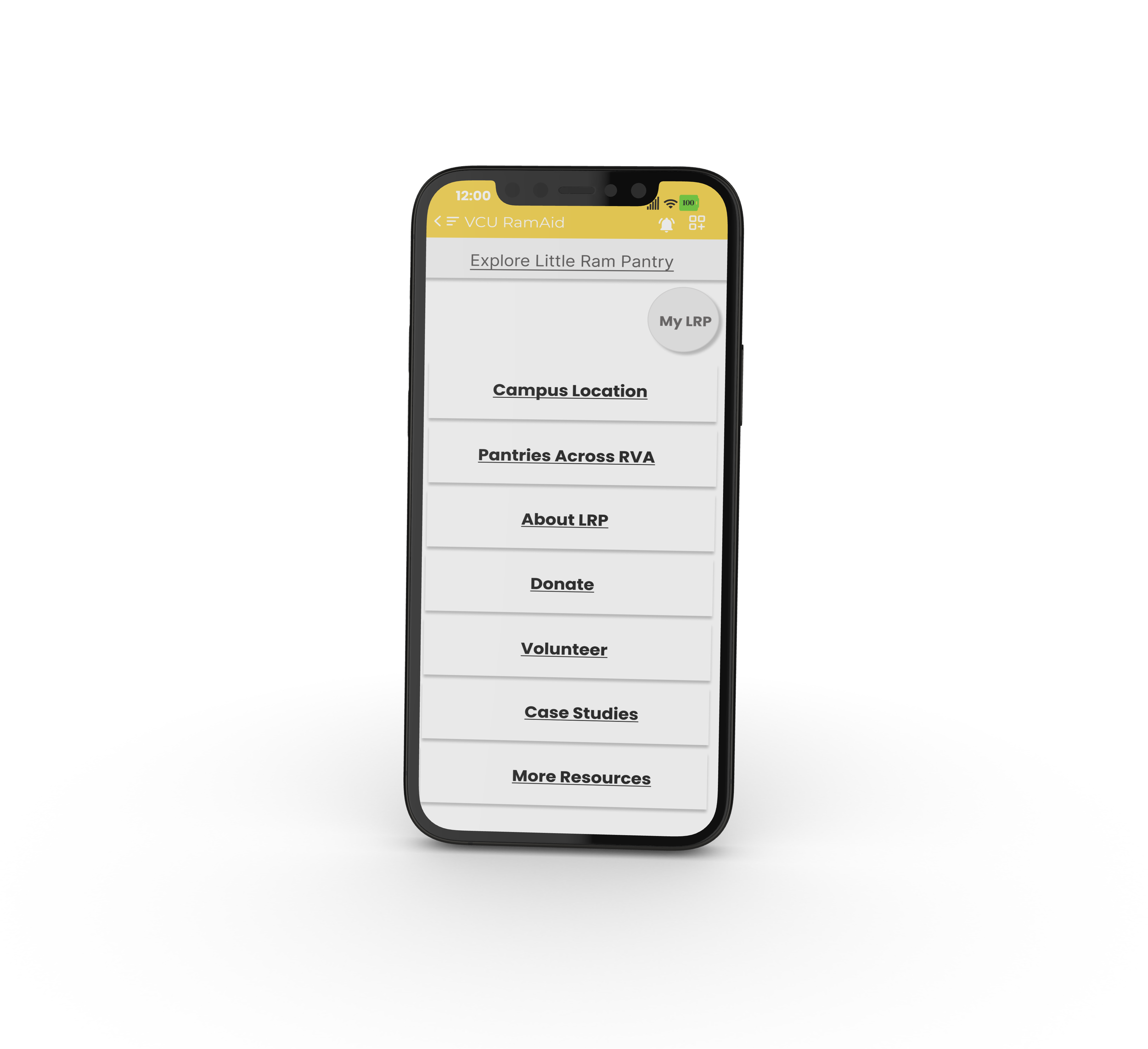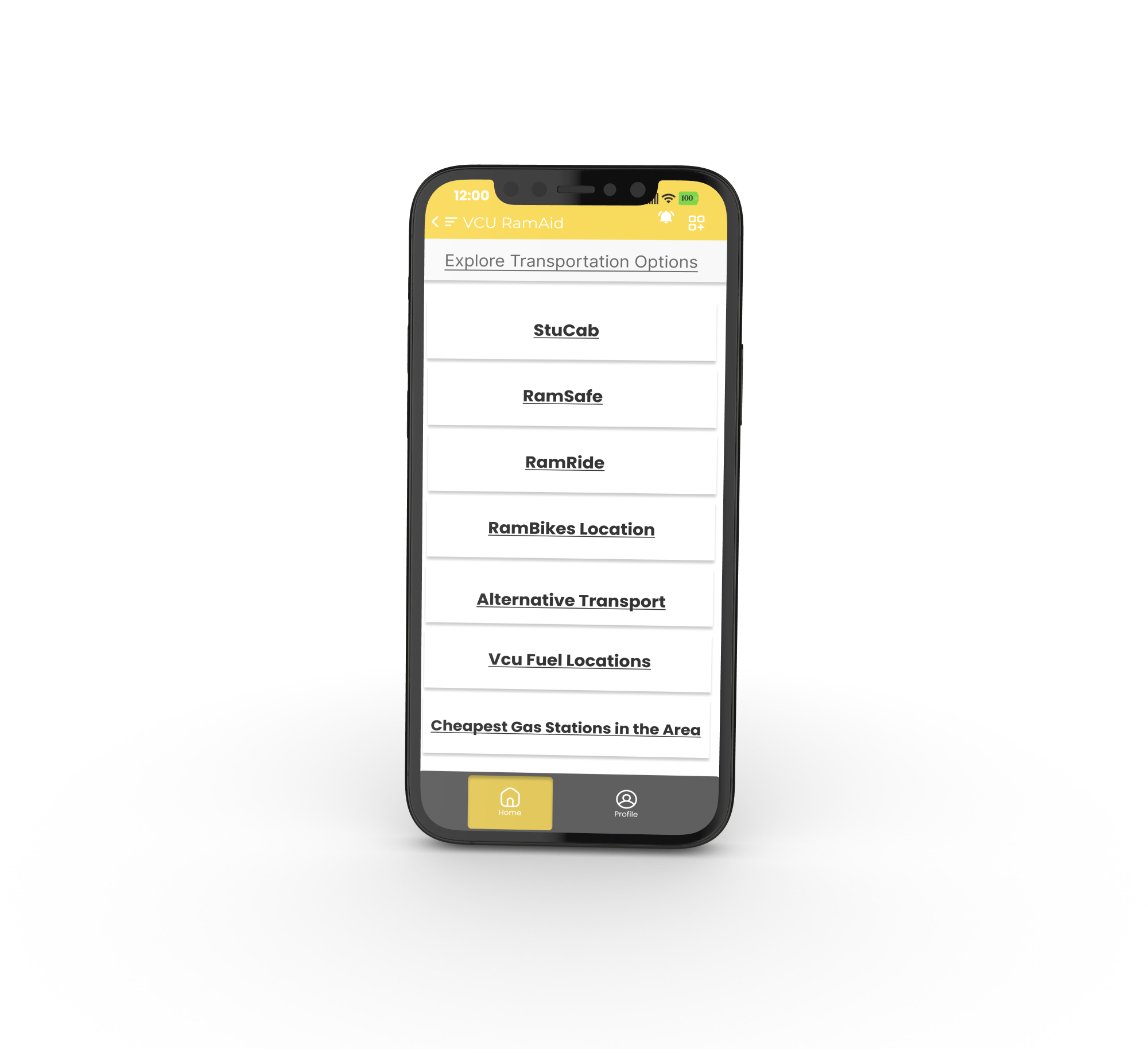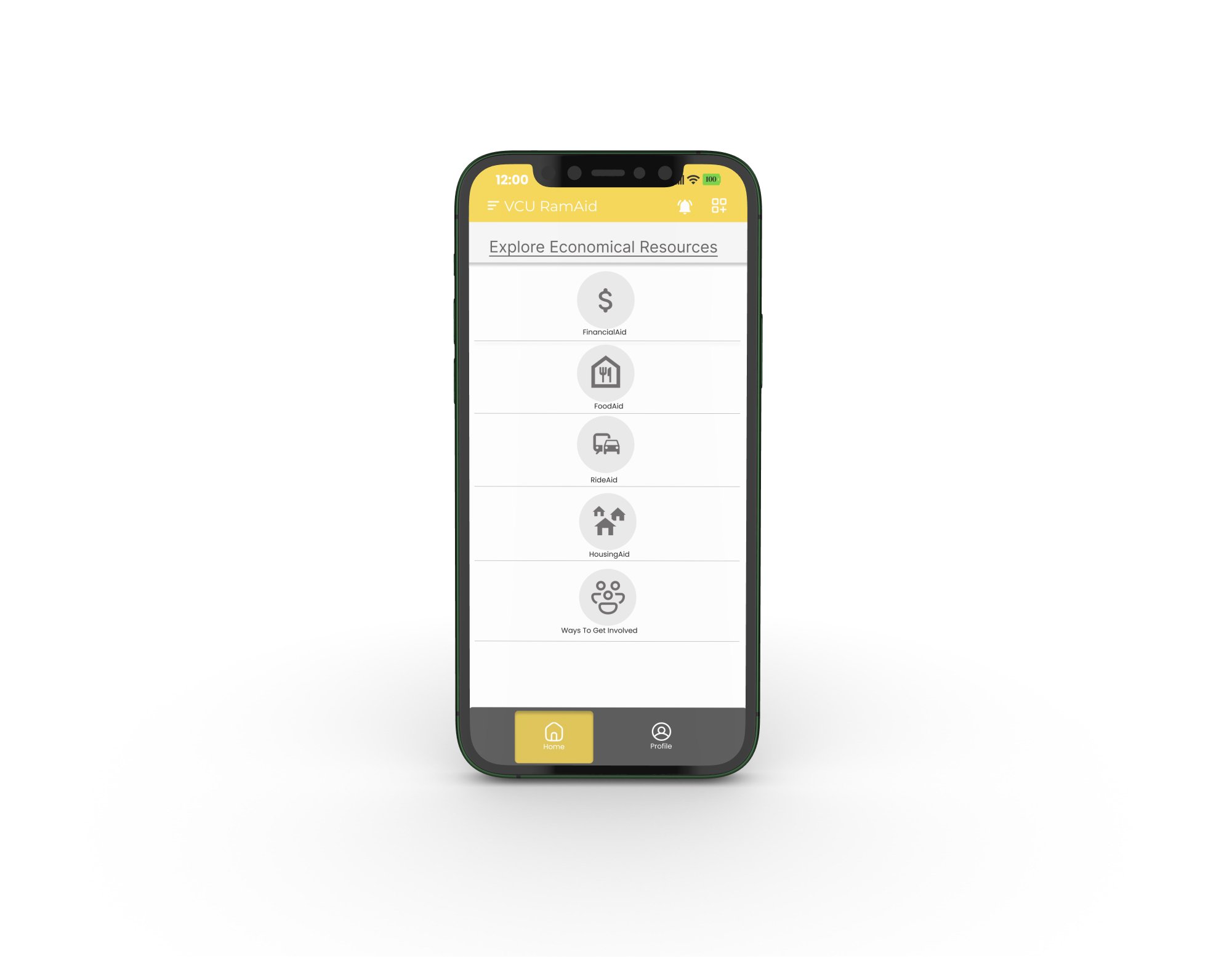
Project Overview Originally this project was created as a for all economic insecurities faced around the Virginia Commonwealth University population for my Innovation 221 course. But, I decided to take steps further by utilizing it for my service learning course. My Human Centered Design class and Little Ram Pantry( VCU Food Shelter) collaborated to research and develop ways to mitigate food insecurity among the VCU population.
Project Type: Mobile App Design, Case Study
Project Duration 3 weeks
RamAid Mobile App Design
Project Brief My goal was to normalize assistance to those who experience food insecurity. In order to reframe relationship with food insecurity at VCU, I researched education and communications planning. This led me to creating a prototype of economic insecurities in the VCU area that provide aid, resources, and information to those unfortunate. Resources involved are food, transportation, housing, and finance.
Project Outcome This App was presented with our “Little
Ram Pantries: Planning for scale” Presentation. Myself and others presented a multitude of solutions to a widespread issue all across the Virginia Commonwealth University community.
Problem
Understanding Economical Insecurities?
The inability for a person, community, or household to cover their essential needs to live sustainable
Problem Statement
How might we spread awareness on homelessness and overpriced goods & services to create a better experience for students in rough times?
Research has shown that 35% of vcu students experience food insecurity
Young people living at the intersections of identity like LGBTQ youth, pregnant and parenting youth, and people of color in the rva area experience homelessness or housing insecurity.
The practice of price gouging on gasoline in proximity to the Virginia Commonwealth University has resulted in financial hardships, thereby impeding students' ability to commute.
33% of housing-insecure college students say they didn’t know about assistance from their institution, and another 19% said they didn’t know how to apply.
Persona
Jane: Senior, 22 at vcu studying neuroscience.
She has an internship 4 days a week Mon-Thursday and is a 30 min drive from campus with no traffic. she spends 70$ on gas biweekly. She has been eager to know other transportation accommodations
Jason: Junior, 20 at vcu studying Mechanical engineering,
Jason takes 18 credits, he’s a member of a fraternity, and president of the engineering club. He Often has to couch surf or stay with his friends. Got kicked out of his previous places because of his struggle to pay rent. He’s searching for more economical housing options that fit his budget.
Jordan: Freshman, 18, vcu undecided
Jordan already having a hard time focusing and staying healthy due to his minimal food options. He ran out of swipes and now typically eats 1 meal a day. He can't go out to eat with his friends because he can't afford it but lies and tells them he's tired. He wants to know if there are any helpful resources where he can access more meals/food and any other issues he's having.
➕
Solution
Integrate with VCU Mobile app so it can be prioritized and be accessed when searching for valuable resources
Vcu mobile is a safe space for enrolled students to access. And it goes hand and hand with other resources included on the app
Create a Mobile Application
Students will be offered options on insecurities they need to address( overpriced food, gas, and housing). By using this application students will be able to feel more secure about their economical problems while attending VCU.
Point of Application
The application ensures economical accommodations for students at vcu.
Ideation
Overpriced food
Food insecurity websites and resources in app
Access LRP website through the app under food aid
Donate swipes/dining dollars and canned goods through the app
Map of the food pantries locations
incentivize students- donating will earn the points (specific points for clubs/fraternities), tickets to altria theater shows, basketball games
Student engagement and helping whoever’s food insecure-LRP food drives where clubs/fraternities can attend for to help food insecurity by donating canned goods to earn service points
Example fraternities will have their members donate a minimum of 5 items/canned goods etc to earn service points bring student engagement
Ideation
Overpriced Gas
StuCab: As a vcu student the rider can ask to be picked up somewhere on campus or close proximity of vcu~ a vcu student driver will get the notification and select pick up at location driving them to their desired destination
Students will donate swipes or ram bucks or real money to get a ride. Drivers will receive the swipes
Student driver has to get evaluated on driving records/license/etc before signing up
Fuel program: fuel for students in need of gas can use this program
Map of fuel locations
Vcu gas card: to use machine. Pay using your rambucks or own money
incentivize students- donating will earn them points (specific points for clubs/fraternities), tickets to altria theater shows, basketball games etc
Ideation
Homelessness and housing insecurities-
Map of cheapest housing options around vcu
App where they can find affordable food housing
Select a housing area in vcu housing or off campus.
Choose the price range.
Choose furnish or unfurnished.
Choose how many roommates. (what Rooming with people looks like-4 people, but you all pay the same price BUT have separate leases. In that case if one person is not on time or does not have the money you're not responsible)
Students who qualify for financial aid, work study, are independent, pregnant and parenting, or challenged, can register and can automatically be admitted into an affordable home by choice. (not paying for the overpriced housing tuition the school forces them to pay and stay in)
Low Fidelity
Mid Fidelity
Prototype
User Flow
Reflection
What I learned…
I learned that the design process is not linear but iterative. Multiple iterations and revisions are essential for refining the app's usability and ensuring it meets the users' requirements. I realized that design thinking is not just about creating an attractive interface but also about solving problems and addressing user needs in a human-centric way. Also, finding the right balance between offering a wide range of features and keeping the app simple and user-friendly is a continuous challenge. It's important to prioritize features that address the core problems users face.
If I had more time…
I would engage in a more extensive process of user surveys, interviews, and user testing, in conjunction with utilizing a digital prototype. This would demonstrate my ability to refine the scope of the UX flows, enabling a more specialized and targeted approach for marketing this app.




